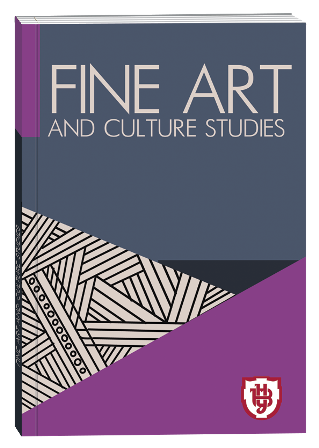UKRAINIAN PIANO REPERTOIRE FOR CHILDREN IN THE CONTEXT OF MODERN TENDENCIES OF PRIMARY MUSIC EDUCATION DEVELOPMENT
DOI:
https://doi.org/10.32782/facs-2025-2-14Keywords:
Ukrainian piano music for children, composer's creativity, music and communication strategies, artistic and educational concept, Musical Art in war timeAbstract
The article explores the peculiarities of the formation of the modern Ukrainian piano repertoire for children in the system of Primary Art Education in the context of transformations of the educational space, cultural, artistic and social challenges of our time. The relevance of the study is due to the need to revise the criteria for selecting educational repertoire in connection with the renewal of educational approaches, the integration of national musical material and the strengthening of the role of Art Education in shaping the child's resistance to external stress factors. The aim of this article is to identify current tendencies in the use of works by Ukrainian composers in the piano pedagogical repertoire, which is based on the evolution of educational, artistic, aesthetic and psycho-emotional needs of the new generation of children (the so-called ‘Generation Alpha’). The methodological basis of the study includes systematic, comparative and analytical, descriptive and empiric research methods. The survey of piano teachers of primary specialised art educational institutions made it possible to identify priority areas in the formation of repertoire, as well as to identify the level of interest in the works by Ukrainian composers of the past and present, including representatives of the Ukrainian diaspora. The scientific novelty of research lies in a comprehensive analysis of the modern repertoire policy on the use of piano works by Ukrainian composers for children in relation to cultural, artistic, musical, educational, social and communicative factors. Conclusions. Today, special attention is paid to combining the pedagogical and artistic potential of works that form the inner world of the child, contributing to his/her personal development and emotional balance in the present-day conditions. The results of the survey revealed a shift in emphasis from the academic music of the last century towards contemporary compositions with vivid imagery, accessible piano presentation and spectacular sound. The author notes the growth of composers' interest in the genre of transcription, the popularity of ensemble works, jazz-style pieces, as well as the tendency to involve compositions with patriotic content. The active use of modern stylisations of Ukrainian folklore as an effective means of musical and aesthetic education is emphasised. The results of the study confirm the need to support compositional and pedagogical initiatives aimed at developing national musical content. The materials of this article may be of interest to piano teachers, composers, musicologists and curriculum developers.
References
Василевська-Скупа Л.П., Швець І.Б., Остапчук Л.О. Шляхи формування національної самосвідомості підростаючого покоління засобами українського музичного мистецтва. Наукові записки. Серія : Педагогічні науки. 2022. № 204. С. 99–103. DOI: 10.36550/2415-7988-2022-1-204-99-103.
Верещагіна-Білявська О., Францужан О. Сучасна українська фортепіанна музика як складова педагогічного репертуару (на прикладі творчості композиторів Поділля). Науковий часопис Національного педагогічного університету імені М. П. Драгоманова. Серія 14 : Теорія і методика мистецької освіти. 2022. Вип. 28. С. 146–155. DOI: 10.31392/NPU-nc.series14.2022.28.20.
Гаран К. Фортепіанна музика для дітей у творчості українських композиторів. Вісник Київського національного університету культури і мистецтв. Серія : Мистецтвознавство. 2014. № 30. С. 24–31. DOI: 10.31 866/2410-1176.30.2014.159816.
Грінченко Т. Музично-педагогічна спадщина Едуарда Бриліна у вимірі потреб сучасної мистецької освіти. Наукові записки Вінницького державного педагогічного університету імені Михайла Коцюбинського. Серія : Педагогіка і психологія. 2020. Вип. 62. С. 187–192.
Данілішина М.Ф. Українська дитяча фортепіанна музика та її дидактично-виховні можливості. Актуальні питання мистецької педагогіки. 2016. Вип. 5. С. 21–25.
Зубай Ю.М. Внесок Ісаака Берковича та Миколи Сільванського в розвиток української музичної педагогіки. Питання культурології. 2022. № 40. С. 33–43. DOI: 10.31866/2410-1311.40.2022.269353.
Кравцова Н. Сучасна мистецька освіта : проблеми і перспективи. Мистецька освіта: виклики та перспективи : матеріали Всеукраїнської наук.-практ. конф., м. Вінниця, 14 листопада 2024 р. Вінниця, 2024. С. 36–41. URL: https://dspace.vspu.edu.ua/items/854ed6cb-9cc3-4fd3-b08c-541c874593ea (дата звернення 25.04.2025).
Ластовецька-Соланська З. «Фортепіанні п’єси для дітей та юнацтва» Миколи Ластовецького : образно-тематичний вимір. Українське музикознавство. 2019. Вип. 45. DOI: 10.31318/0130-5298.2019.0.45.190059.
Новосядла І. Сучасні тенденції формування українського фортепіанного репертуару для дітей (кінець ХХ — початок ХХІ століття) : дис. ... канд. мистецтвознавства : 17.00.03. Київ, 2011. 265 с.
Реброва О. Початкова мистецька освіта як організаційна умова формування музичної культури учнів. Південноукраїнські мистецькі студії. 2024. № 4. С. 51–56. DOI: 10.24195/artstudies.2024-4.8.
Фрайт О. Фортепіанні альбоми та цикли українських композиторів для дітей : історія і сучасність. Дрогобич : Редакційно-видавничий відділ Дрогобицького ДПУ імені Івана Франка, 2010. 94 с.
Юзюк З. Естетико-психологічні засади фортепіанної творчості для дітей українських піаністів-педагогів ХХ століття : автореф. дис. ... канд. мистецтвознавства : 17.00.03. Львів, 2012. 16 с.
Alter F. A., Hays T. N., O’Hara R. The Challenges of Implementing Primary Arts Education: What Our Teachers Say Australasian Journal of Early Childhood. 2009. Vol. 34, No. 4. P. 22–31. DOI: 10.1177/183693910903400404.







